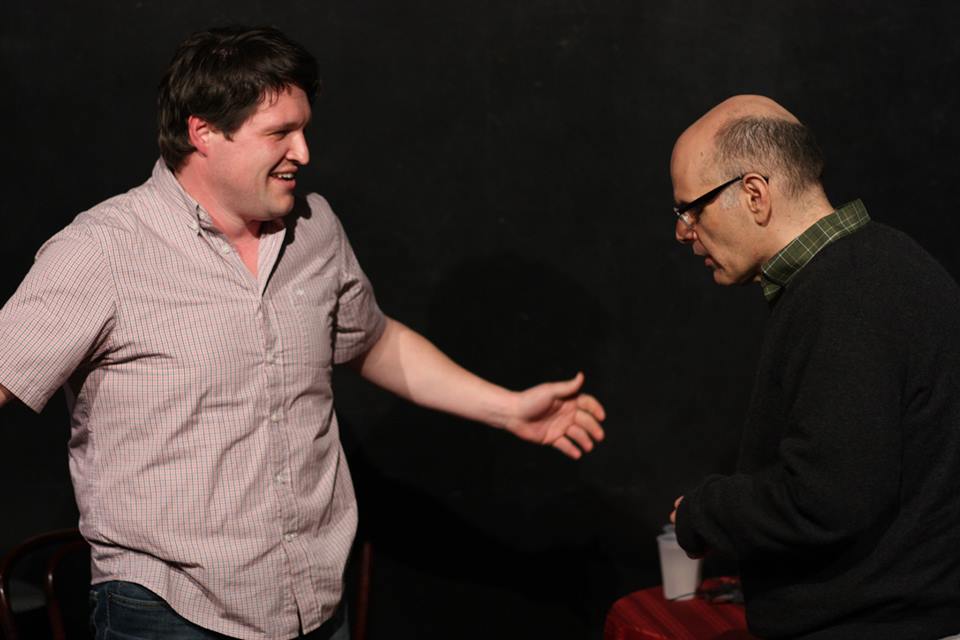A bad day doesn't have to mean bad improv

We have all been there. Something happens during the day that rattles us: a break up, a jerky boss at our day job, a fight with a friend. It’s emotional and we can’t shake it. Then that night we have to trot off to improv class, or worse, we have to do a show and pretend everything is all right.
Improvisers think they need be in a certain "positive" mood to do improve, and if they are not, they either don't bother to show up to class or they ignore their feelings and paint a big latex smile on their faces and muscle through with that fake energy of a birthday party clown. Then when they have a bad improv class or a bad show, they end up beating themselves up or blaming it on their bad day.
What if we looked at those so-called negative emotions as a gift? And instead of trying to push them away, we were brave enough to acknowledge them by saying them out loud to a friend, the class or the group?
When we speak about how we’re feeling, we have a choice about whether to use them in our improvising or to start to let them transform.
I cannot tell you how many classes I have shown up to teach feeling sad or lonely or angry that have turned out to be some of the best classes I have ever taught. Why? Because I acknowledged my feelings, and then I dropped the expectation in my head that I have to be a Big Ten College Cheerleader to be a good improv teacher.
When I deny how I’m feeling and pretend that I’m fine, I lose my connection with my students and I lose my honesty, because am being fake and a phony, and people pick up on that and I am not fooling anyone. When I show up raw and vulnerable I can’t help but be my authentic self, which is the perfect state to be in for improv.
Last week on Improv Nerd Charlie McCrackin of The Reckoning said one of the most important pieces of advice he would give to improvisers is to become aware of their emotions because you can use them. He said if you are feeling sad or angry you might want to use them in character. Charlie e-mailed me later: "The only things I can add to my thoughts on emotions is that it's easier to make use of the strong emotions already present in you than to try to build strong emotions from out of nowhere. Plus denying your actual emotions diminishes your ability to play truthfully."
For many improvisers, learning how to be in touch with how they are feeling is a big first step.
Last week, at the end of my Art of Slow Comedy improv class, one student said she was trying too hard because she had had a difficult day a work and he was having a hard time letting it go in class. Another person said he got in touch with how he missed his family since he wasn't celebrating Passover with them this year.
Realizing how you are feeling, even at the end of class, is huge. Now all they need to do is to reverse it and start acknowledging that before class, so they can use what goes on in their day more effectively.
I still have a long way to go in expressing my feelings, but now I know that when I speak about my feelings instead of trying to throw a gallon of pink paint over them or manipulate them, I end up doing some of my best work in spite of myself. And today I realize, just because I have a bad day does not mean I have to do bad improv at night. Instead, I can use those emotions to inspire my choices and deepen my connections with my partners to make me an even better improviser.


I'd pay top dollar to watch you throw a gallon of pink paint over your feelings, with 1-condition: I own the masterpiece.
I hope "throw a bucket of pink paint on it" becomes the new "put a bird on it"
I've been enjoying your posts for awhile now and always find myself appreciating that the messages are bigger than improv. I am very passionated about being authentic and am working to help create a courageous, authentic work environment in…insurance. Life might be a little less lonely, a little less scary, and have a little more joy if we connect with and embrace where we are.
The thing about paint is that what's underneath -- structurally -- is always revealed in the surface. Dry wall and mudding can be seen through the paint. Hopefully, your scene partner will see what you're hiding beneath the paint and start poking it until the bubble pops.
[…] https://jimmycarrane.com/bad-day-doesnt-mean-bad-improv/ […]